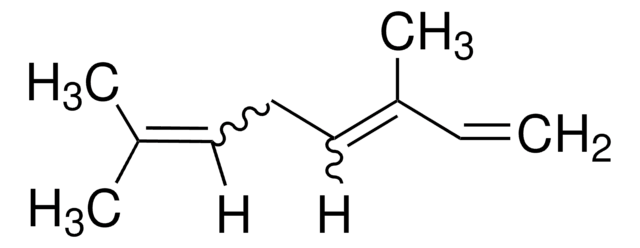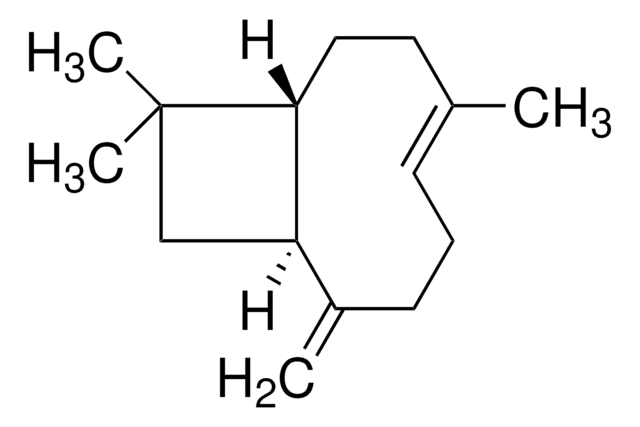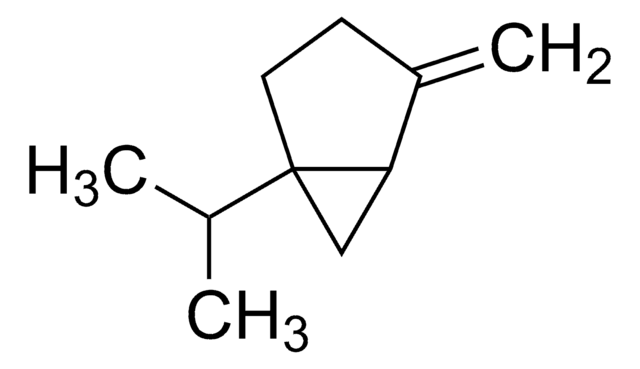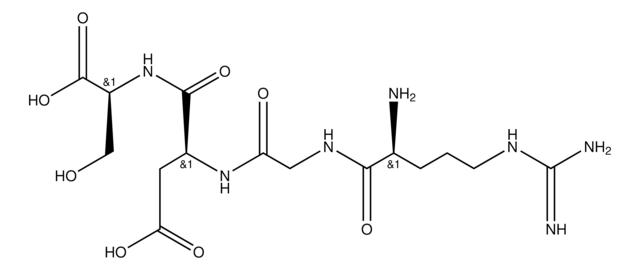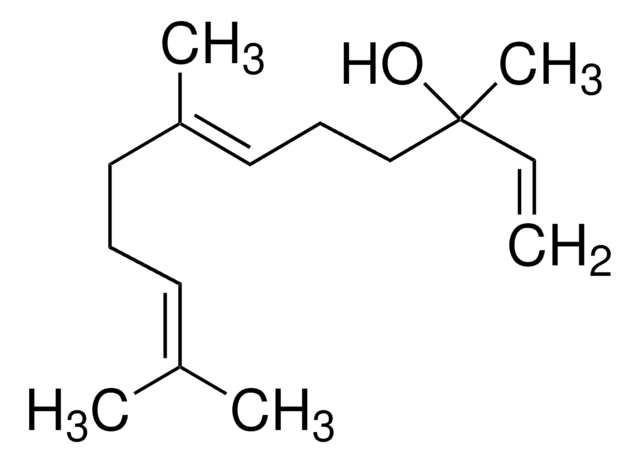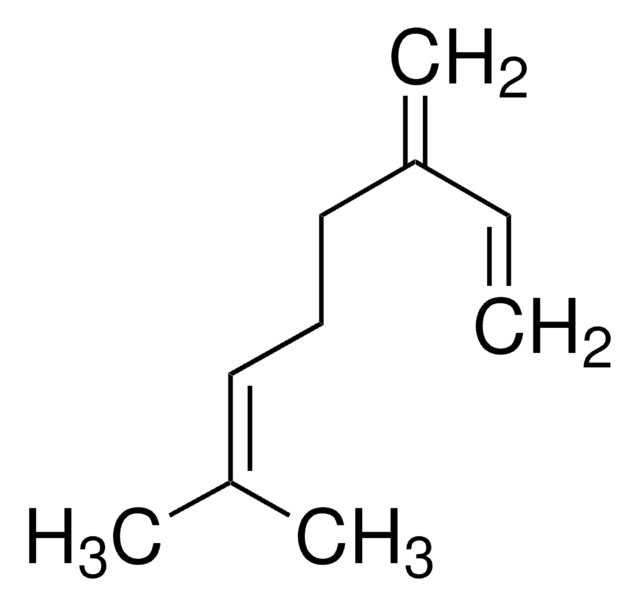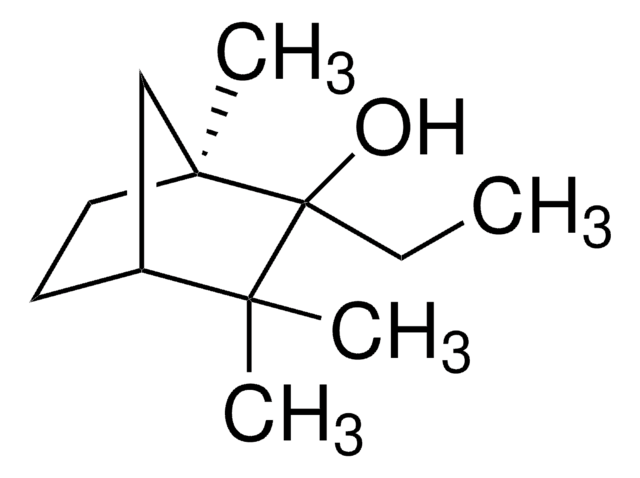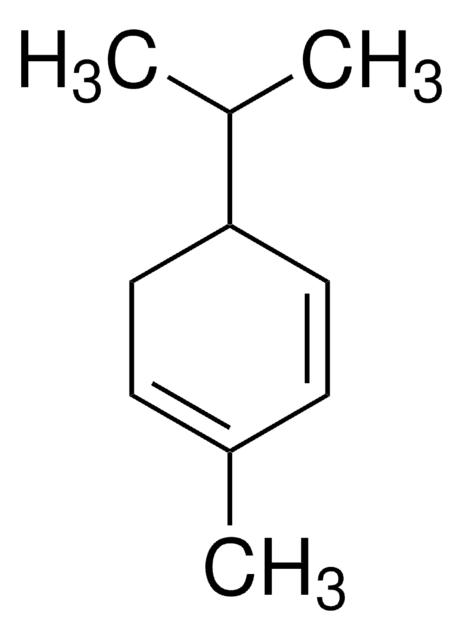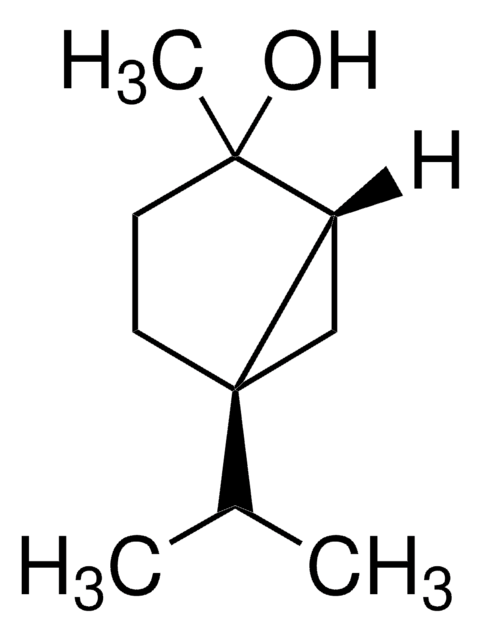Kluczowe dokumenty
W353901
Ocimene
mixture of isomers, stabilized, ≥90%
Synonim(y):
3,7-Dimethyl-1,3,6-octatrien, 3,7-Dimethyl-1,3,6-octatriene
About This Item
Polecane produkty
pochodzenie biologiczne
synthetic
Poziom jakości
agency
meets purity specifications of JECFA
zgodność regionalna
FDA 21 CFR 172.515
Próba
≥90%
zawiera
BHT as stabilizer
współczynnik refrakcji
n20/D 1.485
bp
65-66 °C/13 mmHg
gęstość
0.818 g/mL at 20 °C (lit.)
Zastosowanie
flavors and fragrances
Dokumentacja
see Safety & Documentation for available documents
Organoleptyczne
green; woody; tropical
ciąg SMILES
[H]C(CC([H])=C(C)C=C)=C(C)C
InChI
1S/C10H16/c1-5-10(4)8-6-7-9(2)3/h5,7-8H,1,6H2,2-4H3
Klucz InChI
IHPKGUQCSIINRJ-UHFFFAOYSA-N
Szukasz podobnych produktów? Odwiedź Przewodnik dotyczący porównywania produktów
Opis ogólny
Zastosowanie
- Volatile metabolomics and chemometric study provide insight into the formation of the characteristic cultivar aroma of Hemerocallis.: This study uses volatile metabolomics and chemometrics to explore the aroma formation in Hemerocallis, identifying significant volatile compounds including ocimene. The findings provide a deeper understanding of the biochemical pathways influencing aroma in plant cultivars (Zhou et al., 2023).
- A taste of sweet pepper: Volatile and non-volatile chemical composition of fresh sweet pepper (Capsicum annuum) in relation to sensory evaluation of taste.: Investigating the chemical composition of sweet peppers, this study identifies ocimene among the key volatiles contributing to flavor profiles, correlating chemical data with sensory evaluations to enhance understanding of taste perception in horticultural products (Eggink et al., 2012).
Oświadczenie o zrzeczeniu się odpowiedzialności
Hasło ostrzegawcze
Danger
Zwroty wskazujące rodzaj zagrożenia
Zwroty wskazujące środki ostrożności
Klasyfikacja zagrożeń
Aquatic Acute 1 - Aquatic Chronic 2 - Asp. Tox. 1 - Flam. Liq. 3 - Self-heat. 2 - Skin Irrit. 2
Kod klasy składowania
4.2 - Pyrophoric and self-heating hazardous materials
Klasa zagrożenia wodnego (WGK)
WGK 3
Temperatura zapłonu (°F)
132.8 °F - closed cup
Temperatura zapłonu (°C)
56 °C - closed cup
Środki ochrony indywidualnej
Eyeshields, Faceshields, Gloves, type ABEK (EN14387) respirator filter
Wybierz jedną z najnowszych wersji:
Masz już ten produkt?
Dokumenty związane z niedawno zakupionymi produktami zostały zamieszczone w Bibliotece dokumentów.
Klienci oglądali również te produkty
Nasz zespół naukowców ma doświadczenie we wszystkich obszarach badań, w tym w naukach przyrodniczych, materiałoznawstwie, syntezie chemicznej, chromatografii, analityce i wielu innych dziedzinach.
Skontaktuj się z zespołem ds. pomocy technicznej